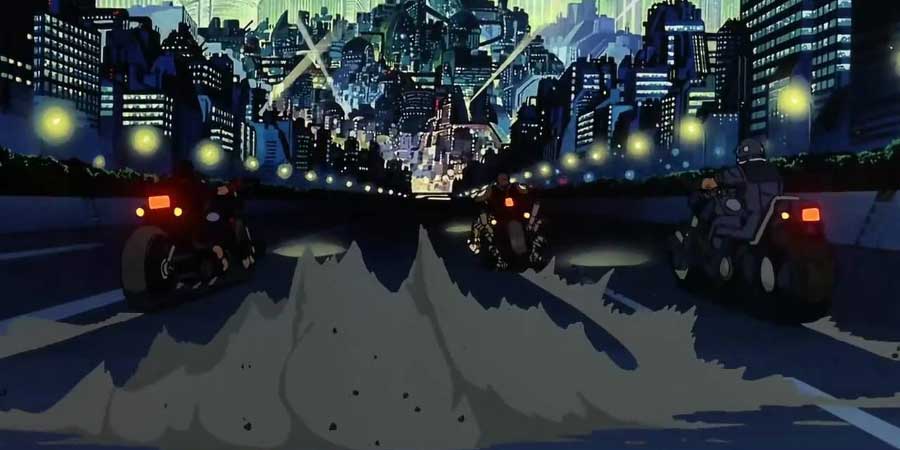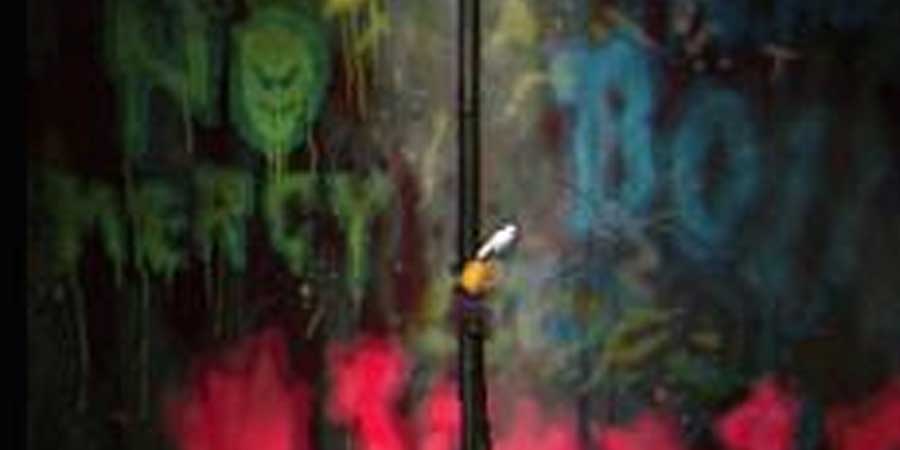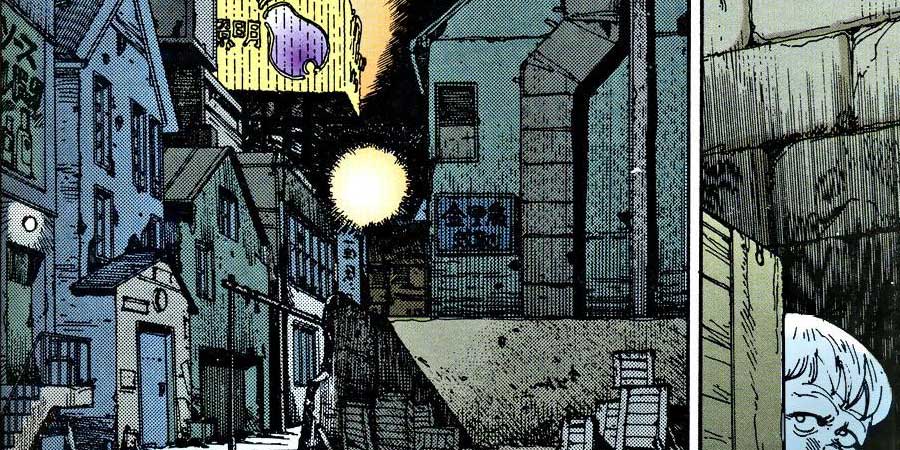This article was first published on March 14, 2017 and it is also available in Italian.
WARNING! In this post, I try not to reveal anything about the plots of the two works in question. That being said, I advise you to continue reading only if you are familiar with both of them!
I've been thinking about this post for about a year[1], ever since I read for the first time the manga of the masterpiece by Katsuhiro Otomo, after growing up having watched and rewatched the homonymous movie.
Let's say I enjoyed analyzing some aspects of Akira's artistic style, relating them to what has always been one of my favorite topics:
Final Fantasy VII.


The great artistic school of elevators.
The Importance of Akira
Akira has been a turning point for Shonen, Seinen, Cyberpunk, and perhaps for Science Fiction as a whole:
To put it bluntly, we could define it as a sort of Divine Comedy of modern Japanese pop culture.
Therefore, let's specify:
Its influence doesn't start or end with Final Fantasy VII, quite the opposite.
However, since I'm mentioning two works that are undoubtedly crucial in their respective fields, let's analyze some possible connections between them.
The Legacy of Hiroshima and Nagasaki


The trauma of the Atomic Bomb has often been depicted in Japanese entertainment, partly perhaps with the intention of exorcising it:
The total and indiscriminate destruction, annihilating, in its way both futuristic and modern as well as archaic and mythological.
Probably, the words of Oppenheimer about the Trinity test still perfectly describe it:
We knew the world would not be the same. A few people laughed, a few people cried. Most people were silent. I remembered the line from the Hindu scripture, the Bhagavad Gita; Vishnu is trying to persuade the Prince that he should do his duty and, to impress him, takes on his multi-armed form and says, 'Now I am become Death, the destroyer of worlds.' I suppose we all thought that, one way or another.
On this topic that, in my opinion, it's crucial to understanding the entire entertainment industry of Japan, I recommend this excellent article from The Conversation.
Spirituality and Science
Perhaps also because of what I just mentioned, Japanese sci-fi often had a taste bordering on the mystical (congratulations Shinji!), a kind of "secular religiosity" often heavily influenced both by the post-apocalyptic visions of George Miller's Mad Max and by William Gibson's cyberpunk, or films like Blade Runner.
Ghost in the Shell most likely served as climax of this concept.
Motorcycles!


If you follow anime-manga or are simply enthusiasts of Japanese pop culture, you are likely familiar with the figures of the Bōsōzoku:
literally, the "Tribe of Reckless'Speed."

I know, they look pretty funny!
In essence, the category of the young Eikichi Onizuka (main protagonist of GTO and Shonan Junai Gumi), but also, in some ways, "colleagues" of our Cloud:

If you think about it, we could say that this mini-game might be the first "Bōsōzoku Simulator"
It's needless to say that Kaneda and Tetsuo didn't just embrace this trend, they actually contributed to redefining it:
Just think about the movie's cover, with Kaneda's back facing us as he looks at his wonderful scarlet motorcycle.

We're not talking "only" about one of the most emblematic, referenced, and celebrated images in the history of animation and comics:
if you think about it, it's a real manifesto for the entire aforementioned subculture.
Midgar and Neo Tokyo


Different yet closely related, as both are representatives of the hidden nightmare behind the dream of Megacities:
Whole regions, perhaps true nations rather than mere cities, where the relentless squalor of the suburbs is juxtaposed with the decadent opulence of the rich districts.
Moreover, once again we return to the highly Japanese issue of traditional roots suffocated in an excessively modern setting, and it's not by chance that William Gibson baptized it as such:
"Modern Japan simply was Cyberpunk"
I believe it was inevitable that Otomo's futuristic version of Tokyo would meet some similarities with the Made in Squaresoft Midgard:
Epicenters of technology, pollution, a past suffocated by the relentless need for future, but above all, characterized by tremendous classism.

 In doubt, let's put a playground somewhere!
In doubt, let's put a playground somewhere!




Classism, as is typical in real life, is reflected both in individuals and in the architecture of the various neighborhoods, or rather, the various Sectors.


Japan Future-past
This topic, touched upon earlier, is very deep and crucial:
I won't go into it in-depth because Alessandro "Doctor Manhattan" Apreda (Italian blogger) already did a wonderful job some years ago (I personally consider it one of the most beautiful and powerful posts on the Antro Atomico, which says a lot! Translate it if you can, I promise it's worth it).
Staying on the subject, we can certainly see how Akira (1988) and Final Fantasy VII (1997) respectively opened and (practically)closed one of the most intensely creative and inspired decades in modern history, not only conceptually but also in very practical terms:
How much did Akira and Final Fantasy VII cost?
First of all, manga aside, we have the most expensive Japanese animated feature film of its time [2]: Akira cost a whopping 8 million dollars, which in 1988 Japan was no small amount.
On the other hand, we have the first major 3D video game, with a budget so exorbitant (145 million dollars) that it still firmly holds a place on the podium of the most expensive video game productions ever, the only one in the top 10 to have been released before 2008. [3]
Akira and Jenova


Mysterious and incredibly powerful entities that, despite appearing relatively rarely or somewhat in the background, represent the epicenter of everything, starting with the "Hiroshima effect" that I mentioned at the beginning.
Not by chance, both figures possess a strong mystical, or rather divine, connotation, the famous spirituality that clashes with science, rationality, the modern.
Primordial spiritualism dueling with unscrupulous progressivism, albeit with different moral incarnations[4].
In practice, we return to the entirely Japanese dichotomy I mentioned earlier when analyzing Midgard and Tokyo.

The ancient Buddhist temple Sensō-ji, nestled in the Asakusa district in the heart of the ultra-modern Japanese capital, is perhaps the perfect emblem to illustrate all this.
Ancient and New, Eastern and Western, Spiritual and Material, Natural and Technological.
Perhaps the heart of the peculiar charm of sushi-sci-fi lies right there.
And personally, I'm quite convinced that this unresolved and "peaceful" conflict reached its creative peak precisely between the late '80s and the early years of the new millennium.
Comments
if you have any opinions on this dualism, you can comment on this mastodon thread!
the post was originally written (in Italian) in 2017. ↩︎
If I'm not mistaken, the record was broken by Studio Ghibli with Princess Mononoke, but Otomo made up for it in 2004 with the very costly Steamboy. ↩︎
Needless to say, this is one of the many reasons why I doubt the remake project. ↩︎
Akira is a neutral figure at the mercy of events, Jenova represents a parasite physiologically harmful to the Planet ↩︎
